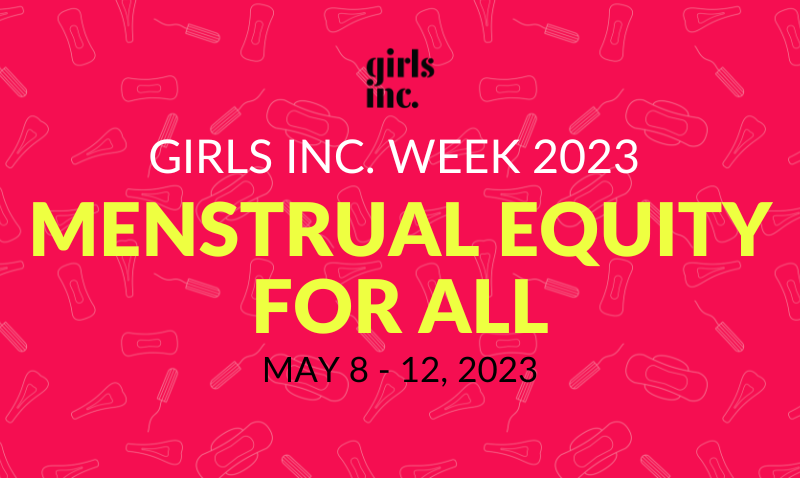Girls Inc. of Sioux City Leading the Way in Healthy Sex Ed. Programming
The federal bipartisan Teen Pregnancy Prevention Program (TPPP) was established in 2010 to address sexual health disparities and reduce pregnancies among youth, utilizing modern, age-appropriate, medically accurate, and evidence-based methods. Evaluations from the first cycle of grant recipients revealed program success and highlighted the importance of continued funding for TPPP’s innovative strategies. Yet last year, the Trump Administration announced unprecedented early termination of existing TPPP grants, threatening young people’s access to these important programs. Fortunately, the cuts were ruled unlawful by several federal judges and the proposal was blocked. Still, this past April the Administration announced overhauling TPPP, shifting funding from evidence-based programming to programs that teach only abstinence.
At least two Girls Inc. affiliates currently receive TPPP funds to provide healthy sexuality programming. Recently, Sonja Breda, Advocacy Outreach Coordinator, chatted with Mandy Engel Cartie, Executive Director of Girls Inc. Sioux City, about the impact of the TPPP in Iowa.
—
Sonja Breda: How did funding from the TPPP support your efforts to advance girls’ reproductive health?
Mandy Engel Cartie: Iowa has one of the highest rates of teen pregnancy in the U.S. Funding from the teen pregnancy prevention program has reduced pregnancy rates and offered us a way to deliver sexual health information in a new and compelling way to get different conversations going. The curriculum itself provides very critical and much-needed information that youth are not getting in school. In Iowa, there’s not strong enforcement on the mandate that schools provide sex education. This means that a core component of curricula regarding young people’s health is missing in the education system. And without proper funding, how will we fill that gap?
We became the only group in Sioux City providing parents resources on how to talk to their children about sexual health. Many parents are uncomfortable talking about sexual health topics because they think they don’t have the training or background or don’t want to say the “wrong thing.” We step in and give them materials and resources to help answer their questions, so they can start conversations and dialogue with their children. And it works! We see more parents, and especially more dads, getting involved in conversations about reproductive health. And we give them the tools to make it happen – well, TPPP did!
Our program primarily serves Latin and African American families, which is important, considering the disproportionate disparities in pregnancy rates between teens of color and white teens.
The TPPP allowed us to hire a social worker who is bilingual and an expert in these topics. This staff member is well-versed in the many diverse needs that go along with the implementation of the curriculum and skilled at community and family engagement.
SB: Does your program engage youth in other forms of health prevention and education?
MEC: Absolutely! Because the funding is called “Teen Pregnancy Prevention,” people often become hyper-focused on the pregnancy prevention aspect. But our program is a more comprehensive form of sex education, and we cover multiple topics related to teen sexual and reproductive health.
For instance, we offer content around sexually transmitted infections (STIs) and offer youth free opportunities to get tested. At one of these events, over two-thirds of the youth tested had an STI. The youth were shocked. While the numbers were consistent with national data showing increasing rates, the teens’ reactions showed us why programming like ours is so necessary.
Our program also teaches youth about puberty, and we devote time to educating young people on healthy relationships and even cyberbullying. We also serve teen parents with home visits that provide an opportunity to learn critical parenting skills. This is something that is missing in most teen health programs, as most services end when a young person gets pregnant.
SB: It sounds like this program has been incredibly effective. How else did TPPP increase your capacity?
MEC: Part of the grant also went to form a “Youth Advisory Board,” which gave teen participants a number of influential leadership opportunities in the community. For instance, the teens shared their knowledge about prevention, teen sexual activity, and community involvement with other teen groups. From this program youth learned that they can start taking control of their health now and that they don’t have to wait. That’s going to be tough to replace.
SB: With all the great work that TPPP funds allowed you do, how did news of the proposed early termination affect you?
MEC: The termination of funding was announced so suddenly that we did not have time to acquire supplemental funding, and as a result, we had to begin notifying staff members about potential layoffs and program cuts. Also, we feared that we were going to lose our community advisory board.
SB: Although the early termination was blocked, did you end up losing the social worker you acquired through grant funding?
MEC: Currently, she is still with us, but we are going to lose her at the end of June. I couldn’t guarantee we would continue to fund her position because of the threats to the program. She understandably had to begin to move on, which is a heartbreaking blow to our program.
SB: One way the Trump Administration justified early termination is by claiming that TPPP showed little and weak impact. How would you respond to this claim?
MEC: Prevention is very difficult to measure. For example, we’ll never know exactly how many unplanned pregnancies condoms prevented. We have a very reactive government that is not always focused on proactive health care.
Organizations like Girls Inc. are working on the front lines of prevention, and just because we cannot always measure the impact, that doesn’t mean it isn’t there. Teen pregnancy rates across the country have dropped significantly in recent years. But progress doesn’t mean that the programs should be cut; it means just the opposite. These programs are working and they are making a difference.


